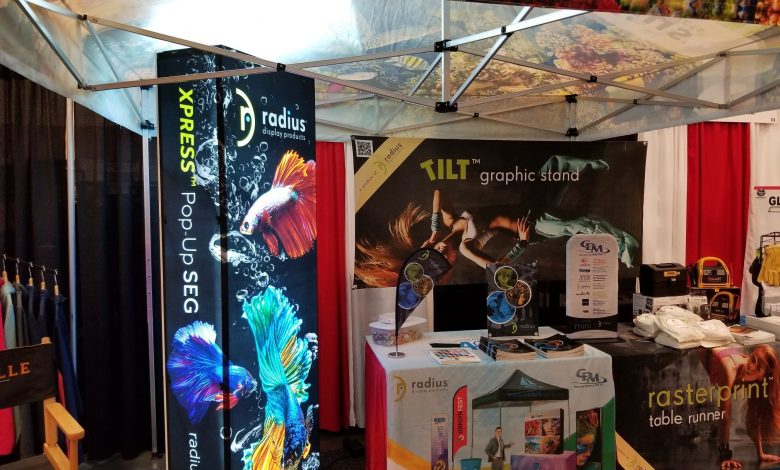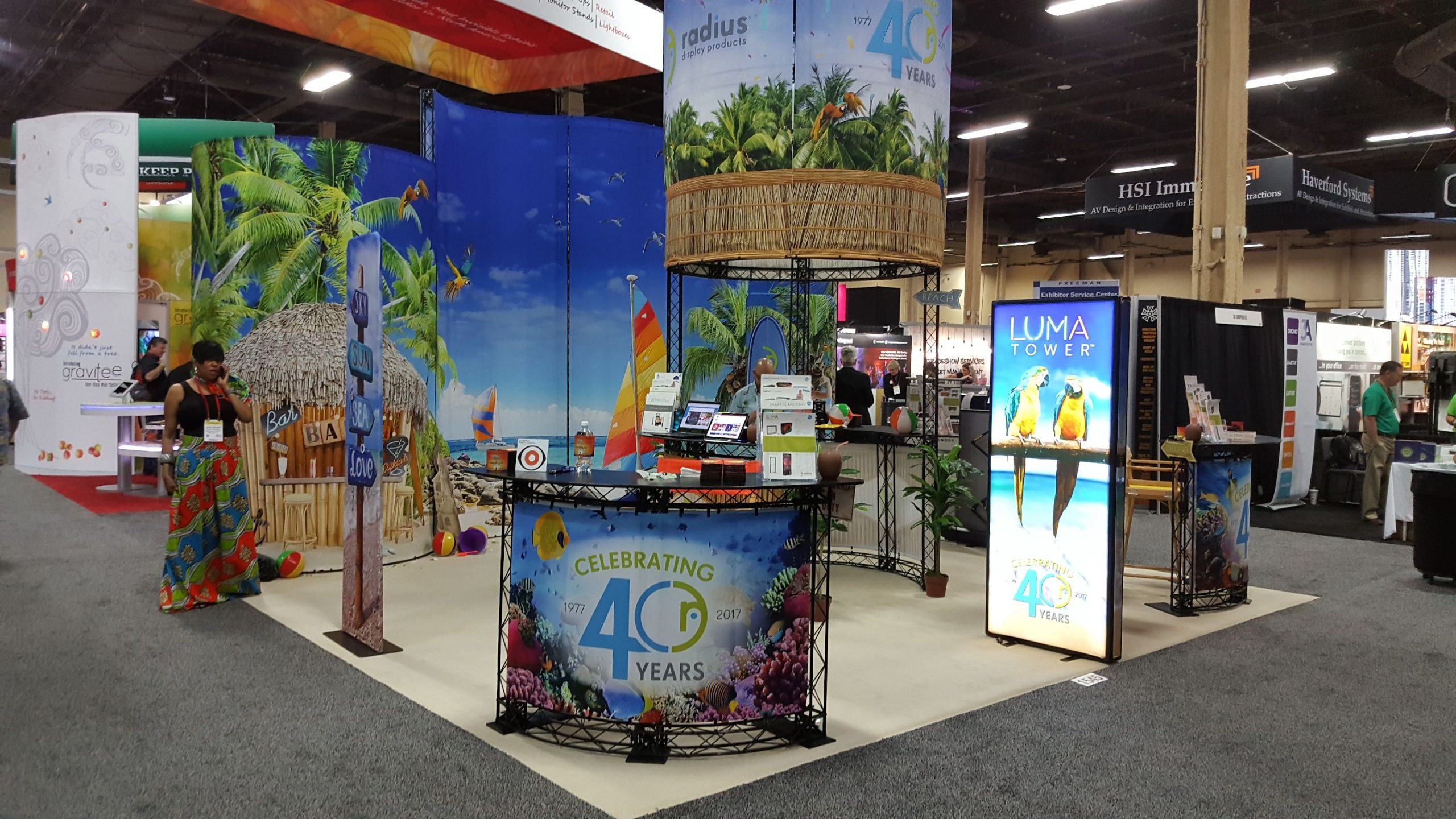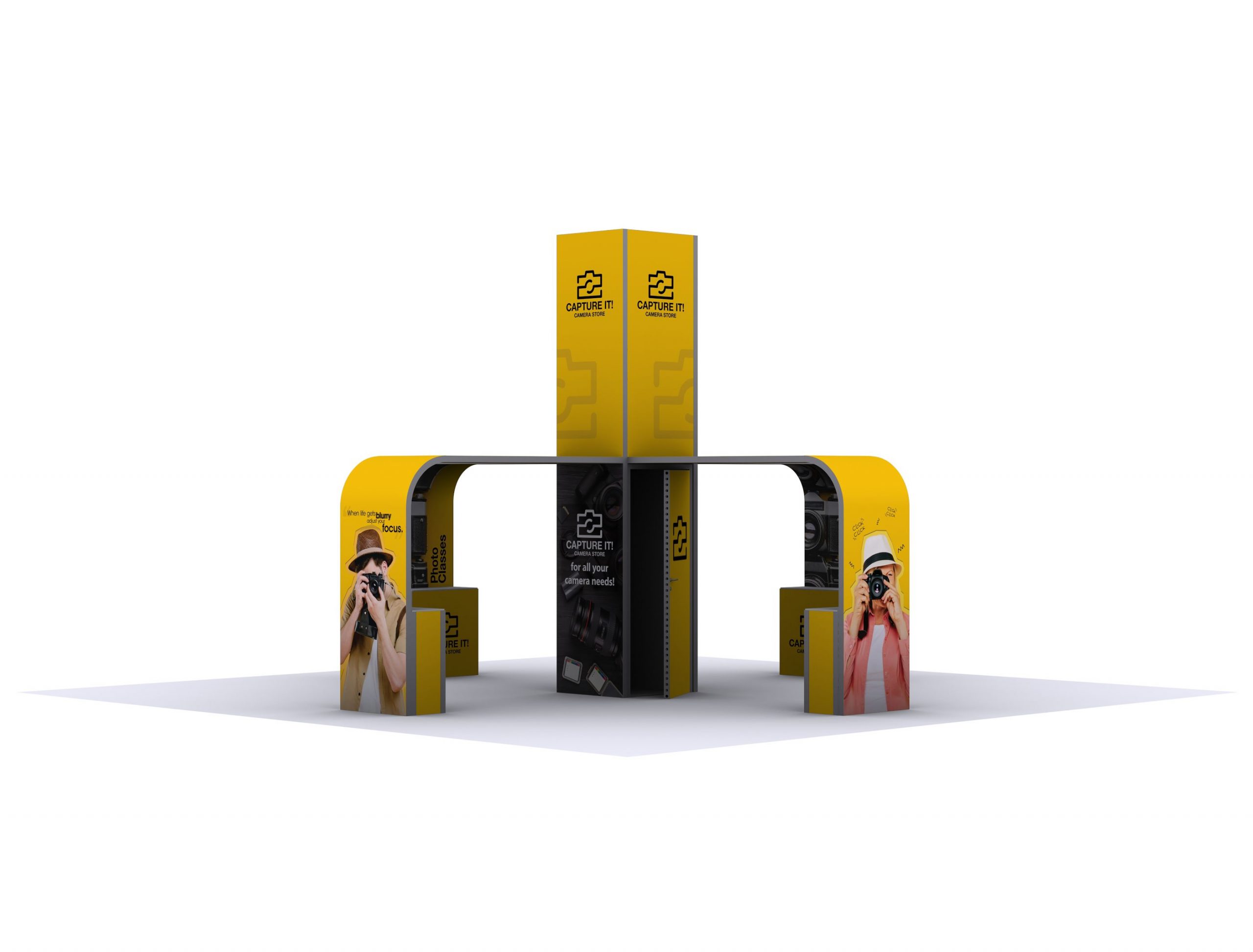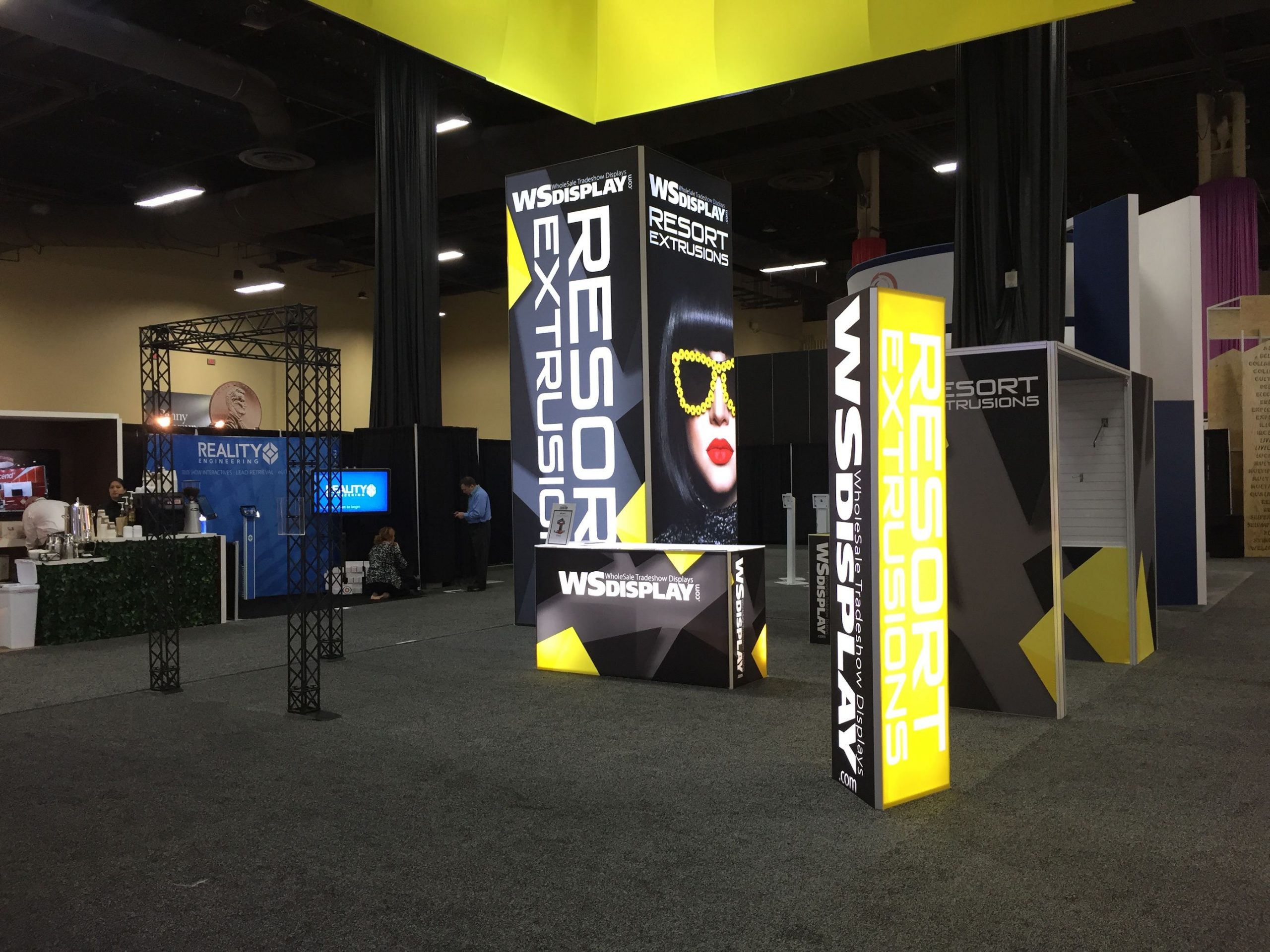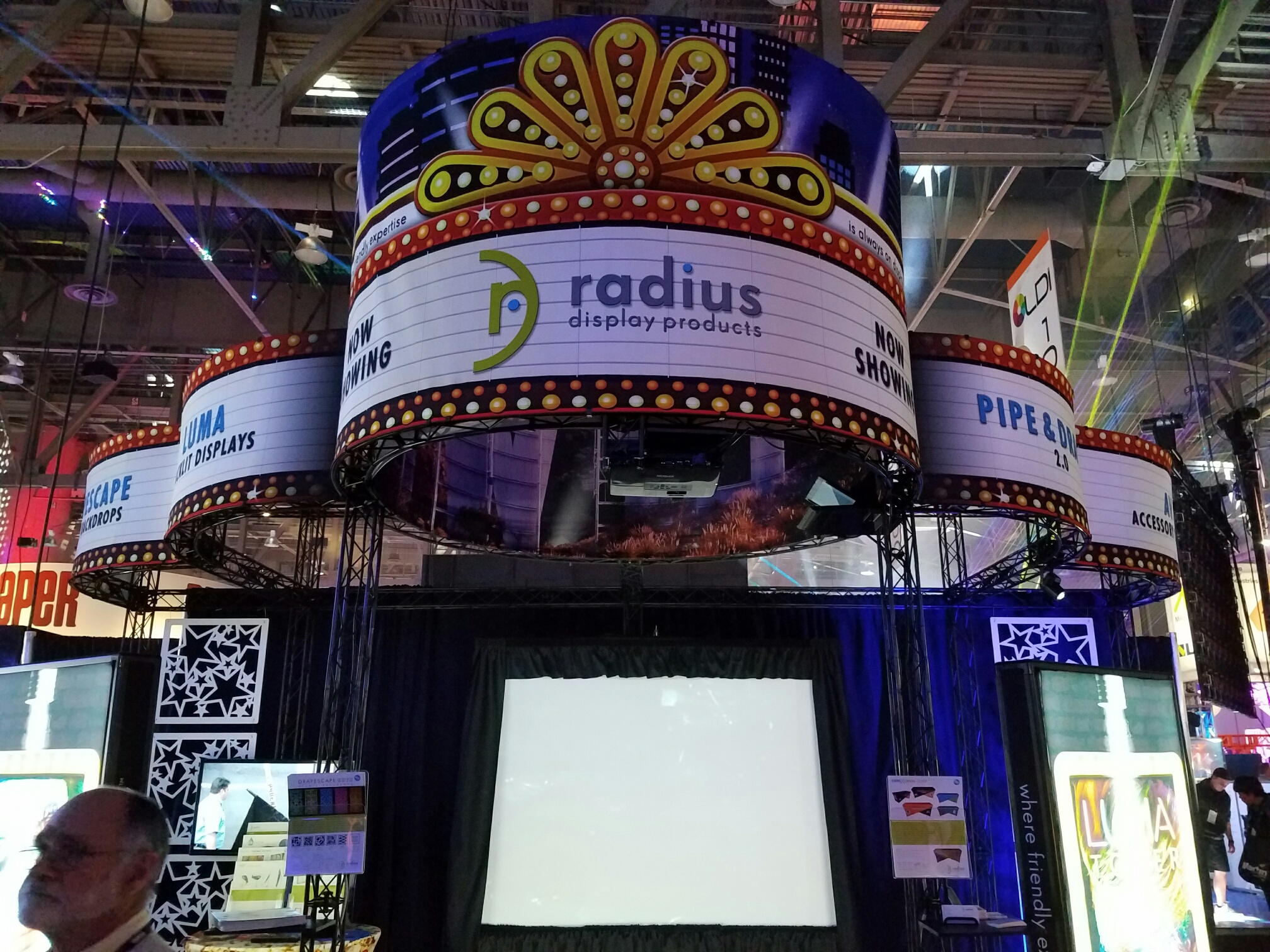Standing Out from the Crowd
Innovations in lightweight, flexible and long-lasting trade show display units have led to more competition among wholesalers.
While it might just seem like trade shows are just an occasional event that hit the floor of your local indoor arena, the greater trade show business is an absolutely massive field in the U.S., valued at almost $17 billion in 2017.
And that means plenty of opportunities to work with wholesalers to provide customers with fully customized and totally portable trade show display stands-with technology and new products aplenty, created by the pros.
Victoria Rodriguez, who handles marketing with Carlsbad, California-based WS Display, says fabric is still the primary construction material among the 19 categories of trade show displays her company manufactures, ranging from retractable banner stands and flags to pop-up fabric displays and canopy tents-in sizes from 2′ to 30′ widths.
“Fabric is easy to ship, it can fold, and it can be washed and still hold its color-it can also be stretched out taut around tube displays,” she says. “Lately, people are liking organic shapes, as well, with circles and general roundness attracting a lot of buyers. Most of our displays are still designed for 10 x 10 or 10 x 20 booths so we’re huge on being portable, and allowing you to set it up yourself.”
Geoffrey S. Duncan, director of sales and marketing with Radius Display Products, in Dallas, says his company’s 41-year history as a direct manufacturer of trade show display technology has given RDP some unique skills and one-of-a-kind products. Duncan says displays have gone from the old days when a Velcro-backed tri-fold table-top back wall unit and a skirt on the table was the industry standard. As processes such as dye sublimation and print-to-paper, transfer-to-fabric have been replaced by high-resolution direct digital printing, displays have become more vibrant and more flexible.
“As an actual manufacturer of these items, we are fairly unique in that we can make custom-size products, where many of our competitors cannot,” he says. “We recently had a request from one of our dealers to print a 65-foot fabric cover for a bus that was going to be used in a media unveiling, and we’ve also done banners large enough to cover building scaffolding during a demolition.”
That customization, Duncan says, allows for a range of products a bit different than the typical one-size-fits-all solutions a reseller might find during a quick internet search.
“We differentiate ourselves by offering unique, scalable display solutions. We want our clients to get the biggest bang for their exhibit dollars, not only for the ‘wow’ factor, but also be able to reconfigure or scale their displays up or down to fit a variety of booth spaces.”
Today’s technological innovations in trade show display stands focus on those modular displays with an emphasis on portability and ease of assembly and disassembly, as well as eye-catching lighting. WS Display’s SEGO Lightbox Display provides magnetic electrical connectors for the LED lights pre-installed in the display itself, providing a clean, cool-looking and entirely tool-free system, Rodriguez says.
RDP’s flexible system uses a common set of hardware, Duncan says, and units can be adapted for use in an 8 x 8 booth, attached together to fill a 40 x 40 space or stretch as high as 20′, with backlighting or motion lighting to make things more dramatic.
“Back-lit displays are today’s rock stars of the display world, and silicone-edge graphics are also the preferred attachment method, versus Velcro or clips,” he adds.
Rick Barber, vice president of sales and marketing with Ontario, Canada-based Frontline Systems Inc., offers a range of display units including retractable banner stands, pop-up backdrops, literature stands and outdoor displays. Barber says he is also seeing an increase in fabric-based materials.
“Perhaps one of the most significant changes has been the emergence of textiles and their many applications for trade show displays,” he says. “They are replacing traditional materials due to their vivid print quality and lightweight characteristics.”
As a master importer and wholesaler for trade show products, he notes that politics has also gotten into the game, with a recent global tariff war leading to a jump in prices in many of the foreign-made products he sells.
“The recent tariffs imposed by the United States government on imports from China has impacted many of the portable display hardware items and there have been cost increases, as a result.”
How should you-or a customer-pick a wholesaler to work with in the trade show display stand field?
“Buyers tend to fall into two camps, the price camp and the quality camp, and in the past, the disparity between those two was very small, since there weren’t very many manufacturers,” Duncan says. “Over the decades, that void has exponentially expanded. Super-inexpensive import fabrics and overseas labor costs have driven prices to a rock bottom in recent years, but what you frequently get are poorly-sewn, gauzy, lightweight fabrics that only last a single tradeshow season. I know it’s a cliché, but you really do get what you pay for.”
To that end, Duncan encourages resellers to consider the benefits of domestic vendors-and to look for qualities including flame-retardant fabrics, washable fabrics, steel versus aluminum frames, and overall print and sewing quality in final products.
Frontline’s Barber says a wholesaler choice depends on a number of variables.
“It’s always important for an exhibitor to assess and consider what they require from their display,” he says. “For some, perhaps exhibiting several times a year, longevity and quality of product is paramount. Others are simply looking for a presence on a budget and may be driven more by costs.”
Rodriguez recommends checking out a full catalog and establishing the breadth of a wholesaler’s options, and asking a few basic questions.
“Do the type of products fulfill your needs as a reseller? It may be easier to go with one company that can handle the majority of your needs, with quick turnarounds. Resellers can take a look at companies that are willing to make relationships, even partnerships. We came up with WS Prime, a partnership-based program, which adds free shipping from both coasts, from both of our locations.”
With most wholesalers, production and shipping can be done quickly and easily, with e-commerce sites for customers to upload and process art, and production turnaround in one or two days.
